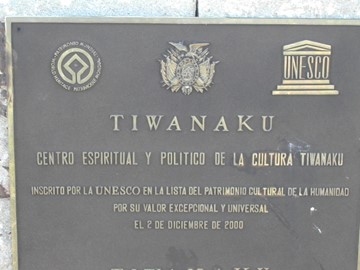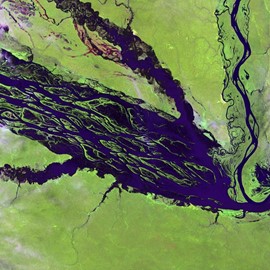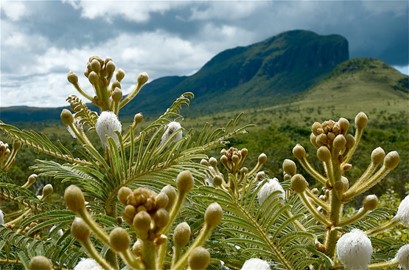region :: latin america and the caribbean
Sucre
Sucre, a UNESCO World Heritage site in Bolivia, is a well-preserved colonial city celebrated for its historical and architectural significance. Founded in 1538, it features whitewashed buildings, ornate churches, and grand civic structures, reflecting its past as a political and cultural center of Spanish rule. Inscribed by UNESCO in 1991, it embodies a harmonious blend of indigenous and European styles. Sucre remains a living showcase of Bolivia’s colonial heritage and urban elegance.
Tiwanaku
Tiwanaku, a UNESCO World Heritage site in Bolivia, is an ancient pre-Columbian archaeological site renowned for its monumental stone architecture and cultural legacy. Flourishing between 300 and 1000 CE, it features the iconic Gateway of the Sun, massive monoliths, and intricate carvings, reflecting the sophistication of the Tiwanaku civilization. Recognized by UNESCO in 2000, it offers insight into one of South America’s earliest urban societies. The site remains a powerful symbol of Bolivia’s indigenous h... Read More
Fuerte de Samaipata
The archaeological site of Samaipata consists of two parts: the hill with its many carvings, believed to have been the ceremonial centre of the old town (14th–16th centuries), and the area to the south of the hill, which formed the administrative and residential district. The huge sculptured rock, dominating the town below, is a unique testimony to pre-Hispanic traditions and beliefs, and has no parallel anywhere in the Americas.
Noel Kempff Mercado
The National Park is one of the largest (1,523,000 ha) and most intact parks in the Amazon Basin. With an altitudinal range of 200 m to nearly 1,000 m, it is the site of a rich mosaic of habitat types from Cerrado savannah and forest to upland evergreen Amazonian forests. The park boasts an evolutionary history dating back over a billion years to the Precambrian period. An estimated 4,000 species of flora as well as over 600 bird species and viable populations of many globally endangered or threatened verte... Read More
Ouro Preto
The Historic Town of Ouro Preto, a UNESCO World Heritage site in Brazil, is a colonial gem celebrated for its Baroque architecture and gold rush history. Founded in the late 17th century, its cobblestone streets are lined with ornate churches, grand mansions, and works by sculptor Aleijadinho, reflecting its past wealth. Recognized by UNESCO in 1980, it preserves a vivid picture of Brazil’s 18th-century prosperity. Ouro Preto remains a striking symbol of the country’s cultural and artistic legacy.
Olinda
The Historic Centre of the Town of Olinda, a UNESCO World Heritage site in Brazil, is a vibrant colonial settlement famed for its 16th- and 17th-century architecture. With colorful buildings, Baroque churches, and convents perched on hills, it reflects Portuguese influence and a rich cultural past. Inscribed by UNESCO in 1982, it’s renowned for its well-preserved urban layout and lively traditions, like Carnival. Olinda stands as a captivating showcase of Brazil’s colonial heritage.
Salvador da Bahia
The Historic Centre of Salvador de Bahia, a UNESCO World Heritage site in Brazil, is a colorful colonial district renowned for its Afro-Brazilian culture and architecture. Established in 1549 as Brazil’s first capital, it features cobblestone streets, vibrant churches, and 16th-century buildings blending Portuguese and African influences. Recognized by UNESCO in 1985, it’s a living testament to the country’s early history and cultural fusion. Salvador remains a dynamic symbol of Brazil’s diverse heritage.
Sanctuary of Bom Jesus do Congonhas
The Sanctuary of Bom Jesus do Congonhas, a UNESCO World Heritage site in Brazil, is an 18th-century Baroque complex celebrated for its artistic and religious significance. Featuring a church, ornate staircases, and 12 life-sized soapstone statues of prophets by sculptor Aleijadinho, it reflects colonial mastery. Inscribed by UNESCO in 1985, it stands as a pinnacle of Brazilian sacred art and architecture. The sanctuary remains a striking emblem of the country’s cultural heritage.
Iguaçu
Iguaçu National Park, a UNESCO World Heritage site in Brazil, is a breathtaking natural reserve renowned for its spectacular Iguaçu Falls. Spanning a vast subtropical rainforest, it features over 270 waterfalls, including the dramatic Devil’s Throat, surrounded by rich biodiversity like jaguars and toucans. Recognized by UNESCO in 1986, it showcases the power and beauty of nature. The park remains a vital ecological treasure and a global natural wonder.
Brasilia
Brasilia, a UNESCO World Heritage site in Brazil, is a modernist capital city celebrated for its innovative urban planning and architecture. Designed in the 1950s by Oscar Niemeyer and Lúcio Costa, it features bold, futuristic buildings like the Cathedral and National Congress, laid out in a unique airplane-shaped grid. Inscribed by UNESCO in 1987, it represents a landmark in 20th-century design. Brasilia stands as a symbol of Brazil’s architectural ambition and urban vision.
Serra da Capivara
Serra da Capivara National Park, a UNESCO World Heritage site in Brazil, is an archaeological treasure renowned for its ancient rock art and prehistoric significance. Housing thousands of paintings dating back over 25,000 years, it offers evidence of early human presence in South America, set amid dramatic cliffs and canyons. Recognized by UNESCO in 1991, it’s a vital window into humanity’s distant past. The park remains a remarkable testament to Brazil’s ancient heritage.
São Luís
São Luís, a UNESCO World Heritage site in Brazil, is a historic colonial city celebrated for its well-preserved Portuguese architecture and cultural richness. Founded in 1612 by the French and later shaped by the Portuguese, its historic center boasts tiled buildings, cobblestone streets, and vibrant traditions like Bumba Meu Boi. Inscribed by UNESCO in 1997, it reflects a unique blend of colonial influences. São Luís stands as a lively symbol of Brazil’s diverse heritage.
Diamantina
Diamantina, a UNESCO World Heritage site in Brazil, is a colonial town famed for its diamond mining past and 18th-century architecture. Its cobblestone streets, Baroque churches, and vibrant houses showcase the wealth of the diamond era. Inscribed by UNESCO in 1999, it offers a well-preserved glimpse into Brazil’s colonial history. The town stands as a charming testament to the country’s cultural heritage.
Discovery Coast Atlantic Forest
The Discovery Coast Atlantic Forest Reserves, a UNESCO World Heritage site in Brazil, are a vital ecological haven preserving one of the world’s most biodiverse rainforests. Spanning coastal forests and mangroves, they shelter rare species like jaguars and golden lion tamarins amid lush, pristine landscapes. Recognized by UNESCO in 1999, they highlight Brazil’s commitment to conservation. These reserves remain a stunning showcase of the country’s natural heritage.
Atlantic Forest South East
The Atlantic Forest South-East, a UNESCO World Heritage site in Brazil, is a biodiverse rainforest region celebrated for its ecological richness. Encompassing mountains, valleys, and coastal areas, it harbors endangered species like the muriqui monkey and a vast array of plant life. Inscribed by UNESCO in 1999, it represents a critical remnant of Brazil’s Atlantic Forest. The site stands as a testament to the country’s natural legacy and conservation efforts.
Goiás
Goiás, a UNESCO World Heritage site in Brazil, is a colonial town renowned for its 18th- and 19th-century architecture and historical charm. With cobblestone streets, simple churches, and red-tiled houses, it reflects its past as a gold mining and administrative center. Recognized by UNESCO in 2001, it preserves Brazil’s early inland settlement heritage. Goiás remains a quaint symbol of the country’s colonial history.
Central Amazon Conservation Complex
The Central Amazon Conservation Complex, a UNESCO World Heritage site in Brazil, is a vast protected region celebrated for its unparalleled Amazonian biodiversity. Covering millions of hectares, it includes rivers, forests, and wetlands teeming with species like pink river dolphins and giant arapaima fish. Inscribed by UNESCO in 2000, it’s one of the planet’s largest conservation areas. The complex stands as a vital testament to Brazil’s natural heritage.
Pantanal
The Pantanal Conservation Area, a UNESCO World Heritage site in Brazil, is a vast wetland renowned for its extraordinary wildlife and ecosystems. Spanning floodplains and rivers, it supports jaguars, caimans, and the world’s densest population of hyacinth macaws. Recognized by UNESCO in 2000, it’s a critical refuge for biodiversity in a seasonal landscape. The Pantanal remains a stunning showcase of Brazil’s natural wonders.
Fernando de Noronha and Atol das Rocas
Fernando de Noronha and Atol das Rocas, a UNESCO World Heritage site in Brazil, are pristine marine ecosystems celebrated for their biodiversity and natural beauty. This volcanic archipelago and coral atoll host dolphins, sea turtles, and vibrant reefs, thriving in clear Atlantic waters. Inscribed by UNESCO in 2001, they’re vital for marine conservation and research. The site remains a breathtaking testament to Brazil’s oceanic heritage.
Chapada dos Veadeiros and Emas
The Cerrado Protected Areas, encompassing Chapada dos Veadeiros and Emas National Parks in Brazil, form a UNESCO World Heritage site celebrated for preserving the Cerrado, one of the planet’s oldest and most diverse tropical ecosystems. These parks safeguard vital flora, fauna, and habitats, serving as refuges for species during past climate shifts and playing a key role in sustaining the region’s biodiversity amid future changes. Chapada dos Veadeiros, perched on an ancient plateau, boasts stunning highlan... Read More
São Francisco Square
São Francisco Square in the Town of São Cristóvão, a UNESCO World Heritage site in Brazil, is a historic gem showcasing a well-preserved colonial urban layout from the 16th century. This picturesque square, framed by charming cobblestone streets, features notable landmarks like the São Francisco Church and Convent, blending Portuguese architectural influences with local adaptations. Recognized for its cultural and historical significance, it reflects the early fusion of European and Brazilian traditions dur... Read More
Rio de Janeiro
Rio de Janeiro: Carioca Landscapes between the Mountain and the Sea, a UNESCO World Heritage site in Brazil, is renowned for its breathtaking natural beauty and cultural harmony. This site features dramatic mountains, lush forests, and iconic beaches seamlessly integrated with the city’s urban fabric, including landmarks like Sugarloaf Mountain and Copacabana Beach. Celebrated as the first urban landscape honored by UNESCO for its natural setting, it reflects the unique interplay between human development a... Read More
Pampulha
The Pampulha Modern Ensemble, a UNESCO World Heritage site in Brazil, is a striking showcase of mid-20th-century modernist architecture and design. This innovative complex, centered around an artificial lake, features bold works by architect Oscar Niemeyer, including the São Francisco de Assis Church with its distinctive curves, alongside contributions from artist Cândido Portinari and landscape designer Roberto Burle Marx. Recognized for its pioneering blend of art, architecture, and nature, it marks a piv... Read More
Valongo Wharf
Valongo Wharf, a UNESCO World Heritage site in Brazil, is a poignant historical landmark tied to the transatlantic slave trade. Built in the early 19th century, this stone wharf served as the main arrival point for enslaved Africans, bearing witness to a somber chapter of human history. Unearthed and preserved as an archaeological site, it stands as a powerful memorial to the resilience of Afro-Brazilian culture and a testament to the nation’s efforts to confront its past.
Rapa Nui
Rapa Nui, the indigenous name of Easter Island, a UNESCO World Heritage site in Chile, is a remote island famed for its monumental moai statues, carved by the Polynesian Rapa Nui people between the 13th and 16th centuries. These iconic stone figures, set against volcanic landscapes and coastal cliffs, reflect a sophisticated ancient culture and its spiritual traditions. Recognized for its archaeological and cultural significance, it stands as a unique testament to human ingenuity and isolation.
























